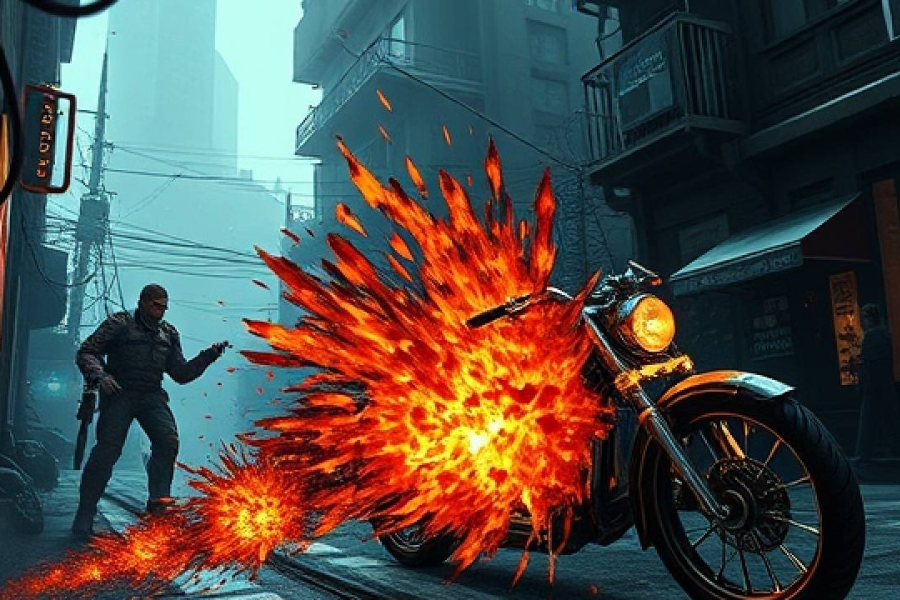The Capcom Game Crash 2080Ti: A Deep Dive into the Issues and Solutions
Introduction
The gaming world was rocked when the much-anticipated release of Capcom’s latest title was plagued by the Capcom game crash 2080Ti. Gamers, eager to experience the stunning visuals and immersive gameplay promised by this new release, were instead met with frustrating crashes on their high-end NVIDIA 2080Ti graphics cards. This unexpected phenomenon sent shockwaves through the gaming community, igniting discussions about compatibility, performance, and the responsibilities of developers and hardware manufacturers.
Understanding the Capcom Game Crash 2080Ti
When players booted up the new Capcom game, they expected a seamless experience, but instead, they encountered frequent and often game-breaking crashes. The Capcom game crash 2080Ti issue rapidly gained attention, leading to widespread discussions across gaming forums and social media platforms. Gamers shared their experiences, sought solutions, and vented their frustrations, sparking a demand for answers.
At the heart of the problem were various technical factors, including driver compatibility, the intense graphics requirements of the game, and even system configurations. The 2080Ti, known for its exceptional performance, faced challenges that raised questions about how modern games and advanced hardware systems interact.
The Technical Breakdown of the Crash
The Capcom game crash 2080Ti resulted from a combination of issues that needed thorough examination. Among the most significant factors were:
- Driver Compatibility: Many players discovered that outdated or corrupted drivers were major contributors to the crashes. These drivers are critical for ensuring that the graphics card can communicate effectively with the game and the operating system.
- Overheating Components: The intense graphics demands of the new Capcom title put significant stress on the hardware, potentially leading to overheating. Such thermal issues can cause instability and subsequent crashes during gameplay.
- Software Conflicts: Interference from other applications running on the system could also be responsible for the Capcom game crash 2080Ti. Conflicting software can lead to resource contention, ultimately resulting in crashes.
These issues underscored the importance of maintaining up-to-date software and understanding how various components of a gaming rig work together.
Analyzing the Impact of the Crash
The ramifications of the Capcom game crash 2080Ti extended beyond individual gamers. The initial frustration expressed by players could have long-term effects on Capcom’s reputation, particularly as they had released several highly anticipated titles. Negative experiences could deter gamers from purchasing future releases, leading to a potential decline in sales.
Moreover, NVIDIA faced scrutiny regarding the reliability of their premium graphics cards. Users questioned the capability of the 2080Ti to handle the demands of contemporary gaming, prompting both Capcom and NVIDIA to address the issues swiftly to maintain consumer trust.
Investigating the Root Causes
Investigations into the Capcom game crash 2080Ti revealed that the situation was more complex than many initially thought. Some key observations included:
- Testing Oversights: There were indications that certain software compatibility issues had been overlooked during the rigorous testing processes typically employed by developers.
- Lack of Communication: A notable gap in communication existed between Capcom and NVIDIA, which may have contributed to the issue. Effective collaboration between developers and hardware manufacturers is crucial for optimizing performance and compatibility.
- Rushed Releases: The rush to launch new games without thorough checks against existing hardware could have played a role in the problems faced by gamers.
Lessons Learned and Future Improvements
The Capcom game crash 2080Ti incident served as a crucial learning opportunity for the gaming industry. In response to the challenges faced, both Capcom and NVIDIA implemented significant improvements. These included enhanced testing protocols and an emphasis on pre-launch compatibility checks.
Capcom released several patches aimed specifically at resolving the Capcom game crash 2080Ti issues. These updates were the result of detailed analysis and feedback from the gaming community, reflecting a commitment to addressing player concerns.
NVIDIA also stepped up by rolling out optimized drivers designed to better support the demanding requirements of Capcom’s games. This not only resolved crash issues but also improved overall graphics performance, ensuring a better gaming experience.
The Role of the 2080Ti in Gaming
The NVIDIA 2080Ti has long been celebrated for its remarkable performance in the gaming arena. As part of the Turing series, this graphics card is engineered to deliver breathtaking visuals and smooth gameplay. Despite the challenges highlighted by the Capcom game crash 2080Ti, the capabilities of the 2080Ti have redefined gaming standards.
Notably, the 2080Ti supports advanced features such as ray tracing, which elevates lighting and shadow effects, creating more lifelike environments. This feature, once reserved for high-end film production, is now accessible to gamers, enriching their experiences.
Beyond stunning visuals, the 2080Ti enhances game performance by minimizing load times and preventing lag, crucial for competitive play where every fraction of a second counts. This power, however, does not eliminate the potential for issues, as demonstrated by the Capcom game crash 2080Ti.
Moving Forward: Addressing Compatibility and Performance
In the wake of the Capcom game crash 2080Ti, both Capcom and NVIDIA have recognized the importance of proactive engagement with their communities. The collaboration between these two industry leaders has set a new standard for addressing and resolving game-related issues.
Going forward, we can expect an increased focus on the following:
- Improved Testing Processes: Rigorous testing protocols will be enhanced to ensure compatibility between new games and existing hardware configurations.
- Real-Time Monitoring: The implementation of real-time testing tools during game development will help identify potential issues early in the process.
- Automated Updates: The integration of AI and machine learning technologies may lead to automated updates triggered by detected issues, reducing the time taken to roll out fixes.
Conclusion
The Capcom game crash 2080Ti phenomenon has underscored the critical need for collaboration between hardware manufacturers and game developers. By addressing these incidents with transparency and dedication, the industry can ensure that gamers enjoy a smooth and immersive experience.
As we reflect on the challenges presented by the Capcom game crash 2080Ti, it becomes clear that staying informed and proactive about software updates is essential for every gamer. With the lessons learned from this incident, the future of gaming looks promising, characterized by improved compatibility and performance, ensuring that players can fully engage in the exciting world of gaming without interruption.
As technology evolves, the partnership between software and hardware will only strengthen, paving the way for a new era of gaming where crashes and compatibility issues are relics of the past. The community’s trust in both developers and hardware manufacturers will grow, enhancing the overall experience for gamers worldwide.
Stay informed with the latest news and updates on Tribuneheadline.com


